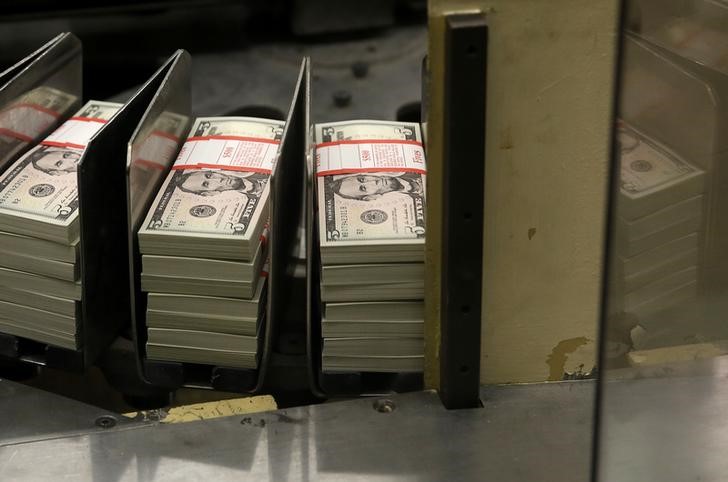Street Calls of the Week
Investing.com -- The U.S. dollar edged lower at the start of the week, weighed down by lingering deficit concerns and renewed trade tensions, despite U.S. President Donald Trump backing away from a proposed 50% tariff on European Union (EU) goods.
According to ING, markets had already moved past April’s tariff-related risks, instead focusing on the potential for trade deals in the months ahead. However, the latest standoff with the EU has brought those fears back into view.
“If there’s a lesson from April, it’s that the dollar bears the brunt of tariff drama,” the bank said.
ING analysts noted that short-term valuation models suggest the greenback remains heavily undervalued—by around 4% against the euro, pound and Canadian dollar, and 3% against the yen and Australian dollar.
Still, those models are currently of limited use as the dollar isn’t trading in line with typical macroeconomic drivers.
“In many respects, it’s behaving more like an emerging market currency,” ING’s team noted, citing investor concerns over fiscal sustainability and unpredictable policy actions.
ING highlights a sharp decoupling between bond yields and the dollar index, as “the 60-day correlation between 10-year Treasury yields and US Dollar Index started the year at 0.68, and now sits at zero.”
Market attention now turns to a batch of key U.S. economic data, with Tuesday’s release of the Conference Board Consumer Confidence index in focus. The figure is expected to recover to around 87, though ING warns that “the dollar may require a return above the 90 mark to start pricing out the growth risks.”
April durable goods orders are also due and expected to show a pullback following March’s strong reading, while later in the week, personal income, PCE inflation and the latest Fed meeting minutes could provide further signals.
With foreign exchange (FX) markets quiet on Monday due to U.S. and U.K. holidays, ING expects clearer signals today.
“Our view is that the balance of risks remains skewed to the downside for the dollar due to deficit concerns and trade uncertainty,” the bank said, adding that without strong upside surprises in economic data, “a retest of the 98.0 April lows in DXY looks more likely than a rebound to 100.0 at this point.”
